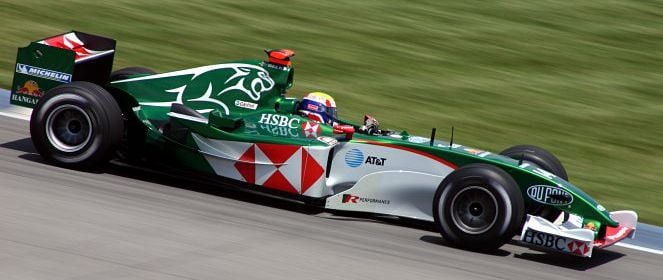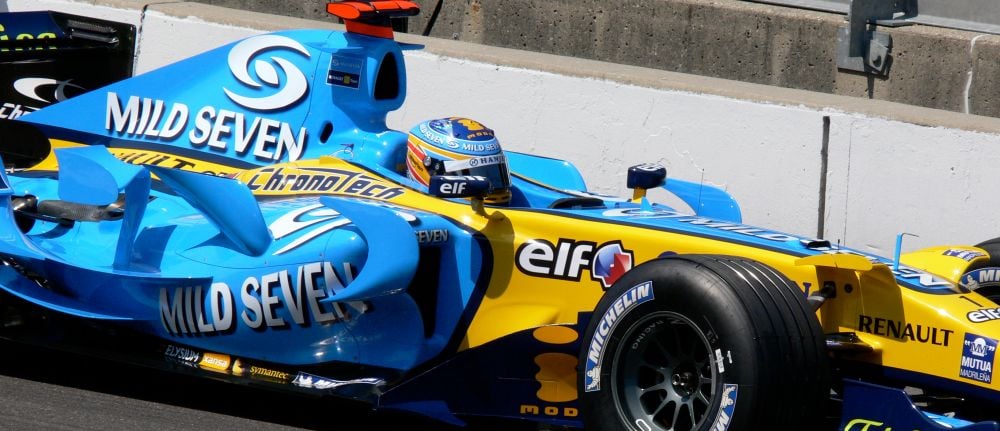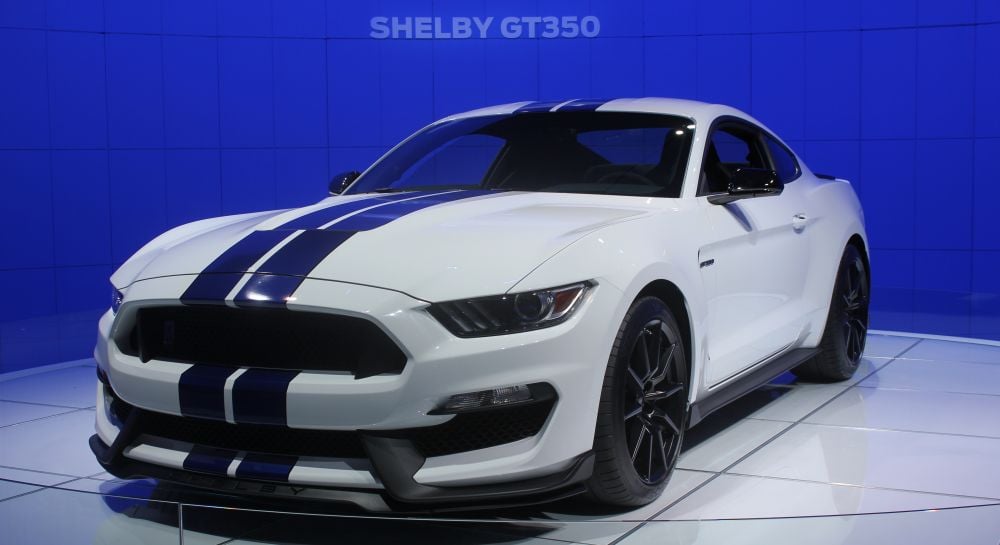Since the early 20th century, racing cars have been driven in colours synonymous with their country of origin. Even now in a world full of corporate sponsorship these five historical racing colours are ever present in most forms of motoring which is miraculous seeing as the FIA opened up cars livery to sponsorship all the way back in 1968. As part of this ‘Top Five’ feature, we explore the history of the colours behind these five motoring giants and their motoring successes.
United Kingdom- British Racing Green
A 1928 Bentley 4 1/2 litre Vanden Plas Le Mans Tourer “Birkin Blower 3”, as shared by Craig Howell
British Racing Green is possibly the most iconic of all the international racing colours, which is odd in its own way seeing as there is not actually a specific colour that defines it, or a team at the pinnacle of European motor-racing (Formula 1) actually currently using it. The colour can be described as a deep, rich green and is associated with the lush British countryside, however, this is not where its origins actually lie.
The British Racing Green colour first came about in 1903 when the UK hosted its first ever Gordon Bennett Cup (a race where several drivers from different nationalities competed against each other). According to the rules of the cup, the race had to be held in the country of the previous winner’s nationality- as Selwyn Edge of Britain had won in 1902, so Britain had to host the race the following year. So in 1903, the race was held in Ireland (a part of the United Kingdom at the time) as no car was allowed to exceed 12mph on the mainland, effectively making motor racing illegal in England.
The rules of the cup also stated that each country had to have its own designated colour, and seeing as the three colours of the Union Jack had already been taken by U.S.A (red), Germany (white) and France (blue), the UK had to find another to race in. As a tribute to their Irish hosts, they painted the cars ‘Shamrock’ green, a colour that was already pretty well established within industry on locomotives, machinery and such- an area where Britain led the way already.
Over the years, British cars like the famous Bentley’s which won at Le Mans in the 1920’s (as pictured at the top) and the Bugatti of British driver, William Grover-Williams that raced in the first ever Monaco Grand Prix continued to use the green colour. F1 teams like Aston Martin, Vanwall, Cooper, Lotus, and BRM took over the mantle in the 50s and 60s, whilst road cars like the iconic Jaguar E-Type and Mk 2, Morgan 4/4 and the Lotus Elan S2 in Racing Green kept the public enthralled.
A Jaguar R5 at the US Grand Prix in 2004, as shared by Rick Dikeman
There was a 30-year gap where the colour almost became obsolete, but it was Jaguar again who revived the Racing Green look by launching their Jaguar Racing F1 car in the classic colour in 2000, with British drivers Eddie Irvine and Johnny Herbert at the helm. Although the team didn’t manage to win a single race in their five seasons, they inspired the likes of Bentley and Aston Martin to use it again in their endurance racing, as well as Lotus Racing in F1 in 2010.
France- Bleu de France
A Bugatti Type 35C Grand Prix Racer being put through its paces, as shared by Nic Redhead
France as a nation is steeped in motoring pedigree, having hosted the first recorded motor race from Paris to Rouen in 1894 and continues to dominate the sport with great success. French teams and drivers won four of the six Gordon Bennet Cups at the turn of the 20th century sporting French ‘Racing Blue’, but became frustrated by the limited amount of entries it was allowed, so it creating its own races called ‘Grand Prix’, a term that is still used today to describe each Formula 1 race.
French dominance in the early stages of motor racing can be illustrated by the fact that Renault won the inaugural Grand Prix in 1906 and Peugeot won the 1913 Indianapolis 500 in only its third ever event. French Racing Blue dominated the Grand Prix’s in the 20s with Delage and Bugatti, whilst 24 Hours of Le Mans was first hosted in 1923, a race that still continues to this day.
The Matra MS80 being shown off at Goodwood in 2008, as shared by Brian Snelson
The likes of Renault and Peugeot can both lay claim to well over a century’s worth of motor racing pedigree, having both won at Le Mans and both competed in F1 with varying degrees of success. Before, during and after WWII, French racing hit a low point, but it regained its status through racing team Matra in the 60s and 70s. Firstly it enjoyed success in Formula 3 and F2 in the mid-sixties, before finally entering F1 in ‘68 with Jackie Stewart at the wheel. He won several races, but it was in 1969 that he won his first Driver’s Championship with his Matra MS80 (powered by Cosworth) that saw Matra also crowned Constructor’s Champions.
Although the company was not to succeed in F1 again, it also won the World Championship for Makes in 1973 and 1974 as well as three consecutive Le Mans races between 1972-74, enough to re-establish the Bleu de France as a racing superpower again.
Fernando Alonso racing for Renault in Indianna, as shared by Ryosuke Yagi
In the 80s and 90s, French Formula 1 fans were in awe of one of the sports most decorated drivers as Alain Prost drove to four World Championships in 1985, 1986, 1989 and 1993. Unfortunately he did not win any of his titles for France-based constructor, Renault, but in 2005 Fernando Alonso helped the team win the first ever Constructor’s Championship, driving around in a light blue car reminiscent of the glory years. The Spaniard collected the Driver’s World Championship that year as well, before going on to repeat the feat in 2006 as well.
Germany- White or Silver
The fact that Germany is the only country to have two racing colours has not stopped them being spectacularly successful with either of them. As we have already learnt, the German moniker of white was determined as part of the Gordon Bennett Cup and all German racers wore those colours until the mid-thirties when the ‘Silver Arrows’ name and look came about.
Michael Schumacher in the ‘Silver Arrow’ of Mercedes AMG Petronas at the Monaco Grand Prix.
The motoring heavyweights of Mercedes and Auto Union (now known as Audi) dominated the Grand Prix’s of the 1930s, but did it in a colour that had not previously be seen before- silver. The origins and truth behind this tale are somewhat blurred, but the story goes as such…
In 1934 there was a rule change in Grand Prix racing that restricted the weight of each car to 750kg which meant that both manufacturers had to build new cars from scratch. It is said that just prior to the second race of the season at the Nürburgring in June, the Mercedes Car was marginally over the weight limit, so Team Principal, Alfred Neubauer had the revolutionary idea of removing the paint and heavy lead filler from the car’s exterior to reduce weight.
Apparently this did the trick and the car raced on with its mechanical elements exposed, spawning the ‘Silver Arrow’ tag. However, this story has been vociferously condemned by some in recent years, saying the car was never painted white in the first place and that some Mercedes vehicles up to two years earlier had been racing in just their stripped down silver metalwork. Either way, since then, Silver has been the predominant colour of choice for German racers.
While BMW continues to use white (with their company colour of blue as well) on their touring cars, as they did with their F1 racers, Mercedes are known as the ‘Silver Arrows’ in the sport. Lewis Hamilton and Nico Rosberg have won the 2014, 2015 & 2016 F1 World Titles with Mercedes taking the Constructor’s Championships in all three years as well, mirroring the colour that Fangio first won the title with 50 years prior.
A Porsche 919 Hybrid at Le Mans, as shared by Curt Smith
And yet Nick Tandy, Earl Bamber and current F1 driver Nico Hulkenberg won 24 Hours of Le Mans 2015 in a white Porsche 919 Hybrid, also signifying their German manufacturer’s heritage.
Italy- Rosso Corsa
Possibly the most recognisable colour in motoring history is the Rosso Corsa red of Italian cars, synonymous with the likes of Ferrari and Alfa Romeo. However, like Britain, Italy’s national racing colour cannot be found on their flag, nor in any of their other sporting uniforms. The ‘Azzurri’ blue is the more traditional sporting colour of Italian sports teams, but not when it comes to racing.
The famous Alfa Romeo 159, or Alfetta that won the 1951 F1 Championship, as shared by
When the colours were dished out at the very first Gordon Bennett Cup, the United States were allocated red, so how did it come to be that Italian racers wear those colours now? Well in 1907 a race that was over 9,000 miles long from Peking (Beijing as we now call it) to Paris took place, starting on June 10th and the Italian winner drove a crimson red Itala car.
The driver, an Italian Prince called Scipione Borghese (accompanied by a journalist and his chauffeur who is said to have done the majority of the driving) crossed the finish line two months later on August 10th, collecting his prize of a magnum of Mumm champagne. Legend has it that the aristocratic Borghese was so confident of winning that he took a detour from Moscow to St. Petersburg just to entertain some admirers over dinner, before returning to Moscow to continue the race!
The red colour of the Princes’ car was adopted by Italy and so in the 1920s and 30s, the Alfa Romeo cars that dominated motorsport were all painted in dazzling red. Alfa won the first Automobile World Championship in the history of automobile racing in 1925 and had continued success for a decade in Grand Prix’s. Alfa Romeo’s also won the Targa Florio six times in row in the 1930s, the Mille Miglia every year from 1928 to 1938 (with the exception of 1931) and Le Mans from 1931-34.
Alfa’s break with Enzo Ferrari in 1937, their one time race driver, turn Head of Racing Division altered the face of motorsport forever (see the full history of Enzo Ferrari HERE). Alfa had initial success in Formula 1 with their drivers Farina, Fangio and Fagioli coming first, second and third in the World Championship of Drivers in the inaugural 1950 season.
In ‘51, Fangio just pipped Ferrari’s Ascari to the title, but since then the tables have turned. The ‘Rosso Corsa’ red has since been dominated by Ferrari in Formula 1, winning the most Constructor’s Titles (16), and Driver’s Championships (15) of any team to have raced.
Although the likes of Maserati and Abarth have also represented Italy in races and Alfa’s strong racing pedigree in touring championships, Rosso Corsa red has now become even more synonymous with Ferrari than it has Italy. Ferrari still uses the colour code in its production of the majority of its road cars that prowl the streets with a swagger and superiority.
United States- Imperial Blue & White
At the Gordon Bennett Cup, America was allocated the colour of red, but as we have already seen previously, this was swiftly adopted by the Italians who wanted to emulate the success of Prince Scipione Borghese.
In 1904, the ‘Association Internationale des Automobile Clubs Reconnus’ (AiACr), which was later to become the FIA, introduced standardised international racing colours during the interwar period. It was decided that the U.S would sport a white body with blue frame rails, presumably to mirror the stripes from the American flag.
This continued to be the precedent until the 1950s until a certain Briggs Cunningham came about. The entrepreneur and sportsman was forced to change the detailing of his Le Mans car in 1951 as his car body was enveloped (or wrapped), therefore covering the blue frame rails. As a consequence, he decided to paint two blue stripes down the centre, running the length of his car, and thus, the racing or ‘Le Mans’ stripe was born.
A contemporary of the time, Carroll Shelby, who had driven for the Aston Martin team at Le Mans in the early 50s saw this idea and took a fancy to it himself. From then on, both Shelby’s road and track cars were painted in the reverse of Cunningham’s cars, with blue paint and two white stripes. The Ford GT40, transformed by Shelby won Le Mans in 1966 and 1967 and has its iconic place in the history of motorsport.
Nowadays, the white with blue stripes is used regularly as a nod to past successes, whilst the blue with white stripes is also still prevalent across American car manufacturers.











